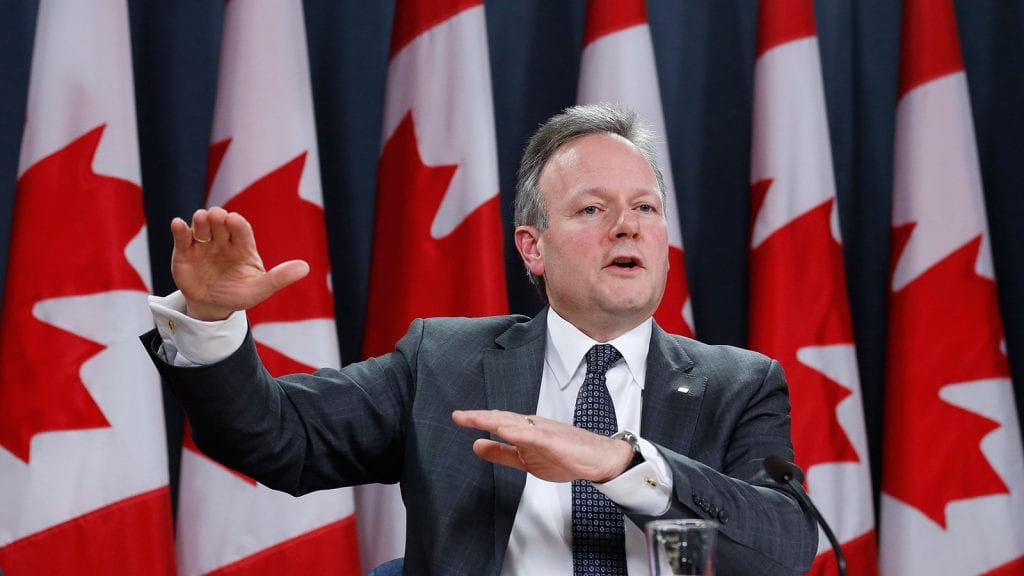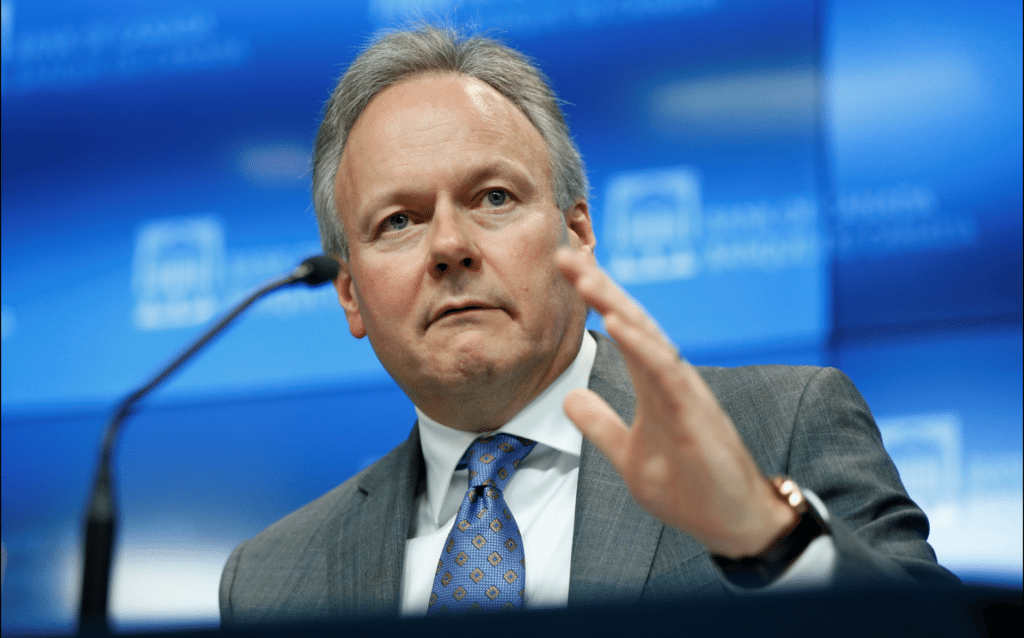
2019 is here, and everyone is anxious to find out where interest rates are headed. Starting in 2017, we saw the Canadian economy beginning to pick up. Since then, we’ve had approximately five interest rate increases in a fairly short period of time. The Bank of Canada had their first interest rate meeting for 2019 and they have decided to hold their current key interest rate at 1.75%. This is the second meeting in a row where they have opted to hold interest rates at the current level, with the last meeting being in December of 2018.
This was not something that came entirely as a surprise, but the banks corresponding report did highlight a shift in tone in the Governor’s remarks. We did see a little more caution and less urgency in the language surrounding further rate increases, which is interesting as the last few meetings really signaled that rate hikes were forthcoming. The Bank of Canada has had the goal of bringing us back to what they call the neutral rate — the rate at which the banks are not artificially stimulating the economy, while still not causing any decline in economic performance.
We have had artificially low interest rates since 2008, following the recession. Over a decade later, we are finally starting to bring the key interest rate to where it should be. The Bank of Canada estimates interest rates should be somewhere between 2.5% or 3.5%. There is a minimum of three interest rate hikes left before we reach this. This isn’t an automated process; the Bank of Canada isn’t going to do this on a schedule just to meet their metrics. All of this is data dependent. If the data says the economy is slowing, or that inflation is not an issue, then they are going to make their decisions based on the data.
It’s expected that, as of right now, the Bank of Canada is likely going to take a quick pause and not increase rates, or will be increasing rates at a slower pace than previously forecasted. No one knows what this might look like. We might still be on track for two or three more increases this year, if everything works out. Some analysts believe there is a potential for no interest rate hikes, while some (though very few) believe we could see interest rates decrease slightly. It does take many months to see the full outcome of an interest rate hike.
So what caused the shift in tone? The issues cited by the Bank of Canada governor included trade, oil prices, and the current state of the real estate market. Over the last six to twelve months, NAFTA was a primary concern — but that has been negotiated. The trade war, tariffs, and political issues lingering between the United States and China are still having an effect. Two major countries fighting economically will have an impact on the global economy. The world is expected to grow a little slower this year than forecasted.
Aside from that, oil prices are lower than we anticipated — and the real estate market in some parts of the country appears to be struggling.
It’s important to emphasize here that real estate is local. The Hamilton market and surrounding areas are still doing very well. However, Hamilton isn’t the entire market. When we say that the market is softening, what we really mean is that the Canadian real estate market, on average, is softening.
Vancouver sales and prices are down in the double digits, probably the worst numbers we’ve seen since 2008. This is related to the government intervention: the extension of the foreign buyer tax, the widening of the boundaries to a large portion of BC, and the local government which has been putting pressure on both buyers and sellers. This has caused some temporary fear in the market and a real psychological impact. We know these things don’t have a lot of material or long-lasting impact, like the Fair Housing Plan, but they do have a psychological impact short-term.
We don’t anticipate any serious harm to the market, but those numbers are weighing on the marketplace. Of course, the new mortgage rules, including the stress test brought in at the beginning of 2018, are still having an impact — but it’s mostly worked its way through the economy. However, the market as a whole appears to be taking a bit longer to recover from the new mortgage rules than expected.
This is not something we should be too concerned about in our area. We are still growing. We saw growth in 2018 and we will see growth in 2019. We will see additional sales — I suspect quite a few more than last year. It’s not abnormal for the Bank of Canada, after hiking rates five times in a short period, to want to take a breather and see how those increases are impacting the economy and the real estate market.
Going forward, this does put a little bit of a damper on our analysis in regards to where we expected interest rates to head for the year. We did anticipate interest rates to probably go up two to three times, bringing us back to the neutral level — or at least the bottom end of that neutral level. At this point, it’s a little hard to say where things are going to go. We may still be in store for two to three interest rate increases — we may see one, we may see none. We don’t know how quickly the Bank of Canada will bring rates up from here forward — and they may not know, either. They’re going to keep watching the trade war, the oil prices, and the real estate market. This is especially true of those markets out west: Vancouver, Calgary, Edmonton, etc, where things were already not the best from an economic and real estate perspective.
For buyers and sellers, the thinking needs to remain the same. Interest rates are going to keep increasing. The Bank of Canada is on a mission to get the rates up to between 2.5% and 3.5%. That’s the key interest rate. That’s not what you’re getting when you go to the bank for a mortgage. Right now the Bank of Canada’s key interest rate is 1.75% and the banks are offering 5 year fixed rates in the mid to high 3% range. If the key rate increases to 2.5% or 3.5%, interest rates at the bank are going to be higher — somewhere in that 4% to 5% range. For buyers and sellers, the story really remains the same.
We know interest rates are going to keep going up. We don’t know how quickly. Home prices are still increasing. They’re going to continue to increase. The fundamentals of the market are still strong on a local level, and Hamilton is going to outperform most if not all markets over the next few years.
Buyers, you want to get into the market as soon as you can. The sooner you get in, the lower the rate you’re going to get. Home values are going up while interest rates are going up: you’re losing money on both ends of the equation.
Sellers, it’s a great time to sell. The market’s moving very well. The lower rates are, the more robust the market is and the easier it is for buyers to get into the market. Take advantage of that: Buyers will be losing more of their purchasing power as rates go up. It’s a good time to get into the market.
Ultimately, not much has changed since our last analysis. The bank will take a wait-and-see approach. The pace may slow or come to a pause, no one knows: The Bank of Canada has to analyze its data as these things arise. The important takeaway is that rates are going to continue to increase, regardless, and at whatever pace, until they get to that neutral level. Your calculations from a buyer or seller’s standpoint should not change. We’re in for an interesting year, but it just goes to show how quickly things can change in the economy. We’ll keep you posted as the situation continues to develop.


